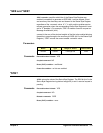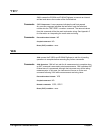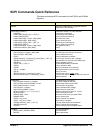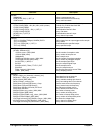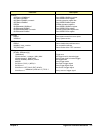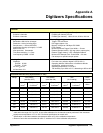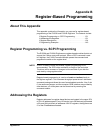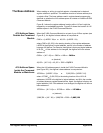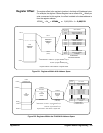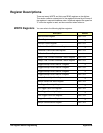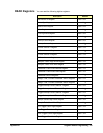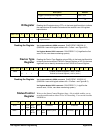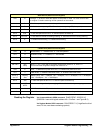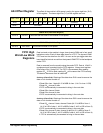
Register-Based Programming 121Appendix B
Appendix B
Register-Based Programming
About This Appendix
This appendix contains the information you can use for register-based
programming of the E1563A and E1564A Digitizers. The contents include:
• Register Programming vs. SCPI Programming . . . . . . . . . . .121
• Addressing the Registers . . . . . . . . . . . . . . . . . . . . . . . . . . . .121
• Register Descriptions . . . . . . . . . . . . . . . . . . . . . . . . . . . . . . .124
• Programming Examples . . . . . . . . . . . . . . . . . . . . . . . . . . . . .140
Register Programming vs. SCPI Programming
The E1536A and E1564A Digitizers are register-based modules that do not
support the VXIbus word serial protocol. When a SCPI command is sent
to a digitizer, the E1406 Command Module parses the command and
programs the switch at the register level.
NOTE If SCPI is used to control this module, register programming is not
recommended. The SCPI driver maintains an image of the card state.
The driver will be unaware of changes to the card state if you alter the
card state by using register writes.
Register-based programming is a series of reads and writes directly to
the digitizer registers. This increases throughput speed since it eliminates
command parsing and allows the use of an embedded controller. Also, if slot
0, the resource manager, and the computer GPIB interface are provided by
other devices, a C-size system can be downsized by removing the
command module.
Addressing the Registers
Register addresses for register-based devices are located in the upper 25%
of VXI A16 address space. Every VXI device (up to 256 devices) is allocated
a 32-word (64-byte) block of addresses. With 51 registers, the digitizers use
51 of the 64 addresses allocated.



